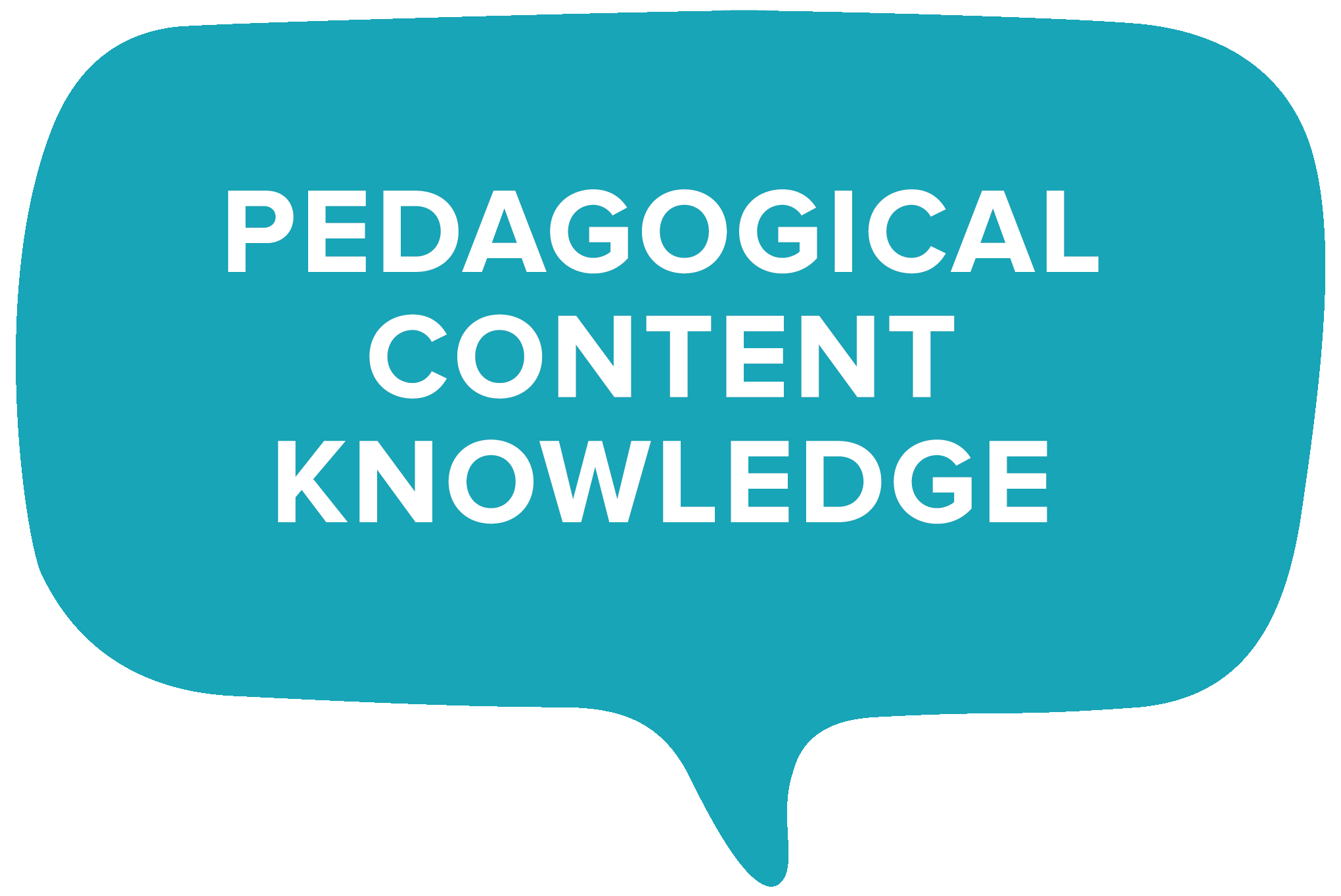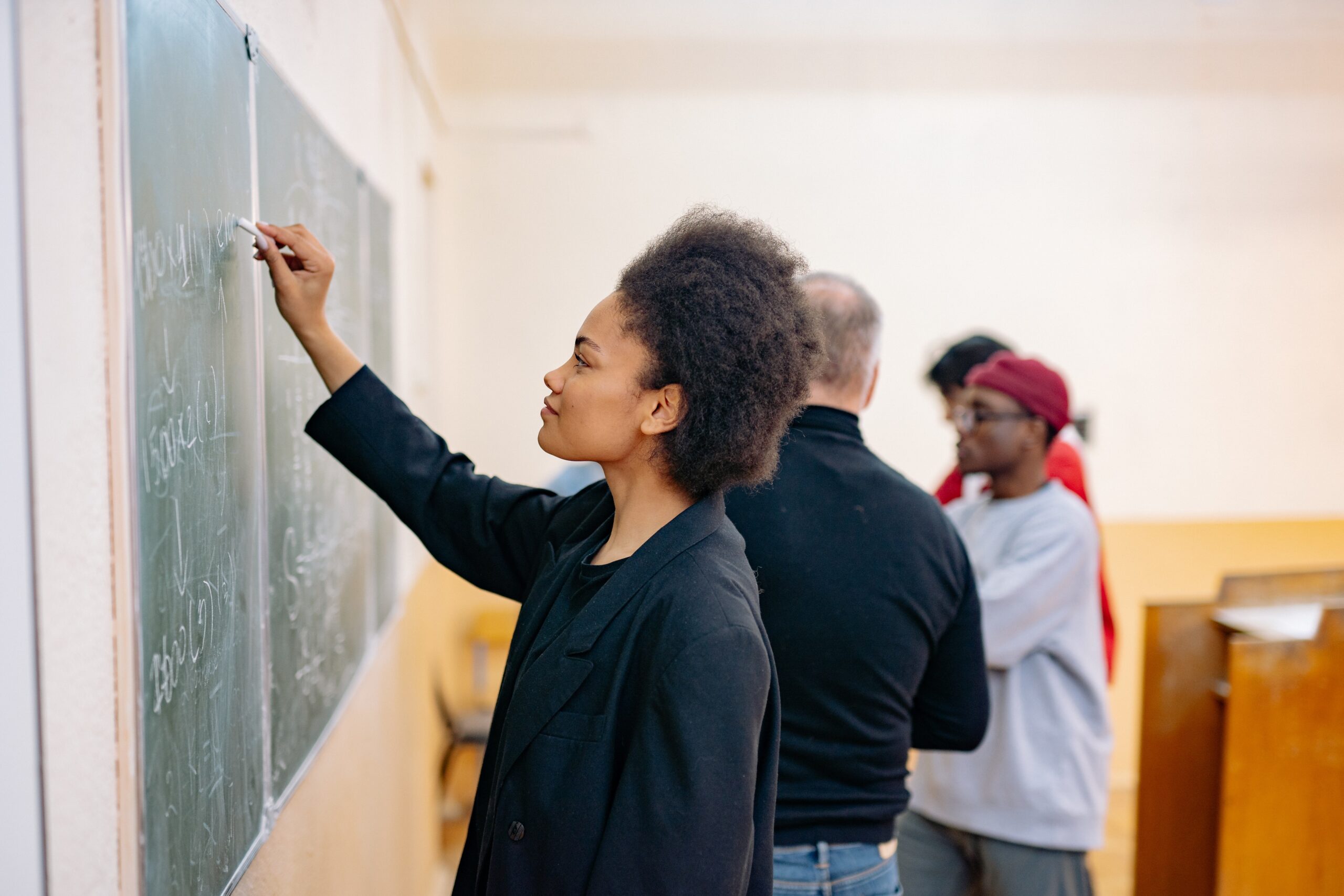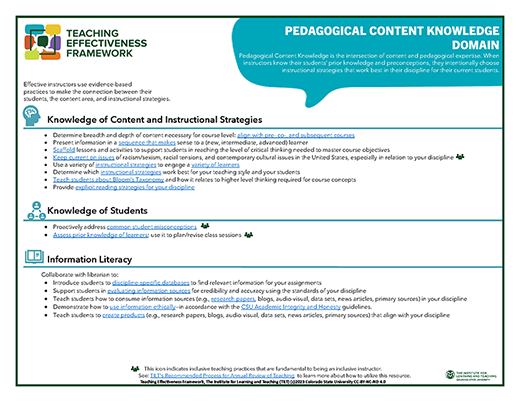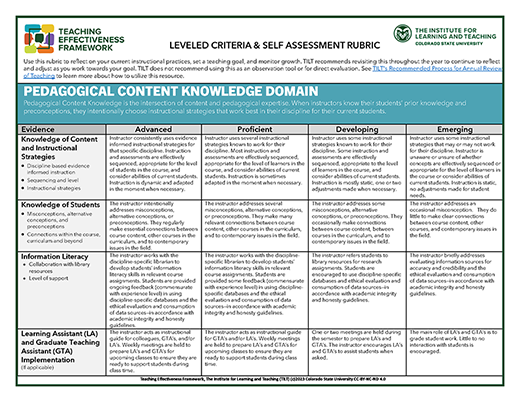
Short Description:
The intersection of content and pedagogical expertise. When instructors know their students’ prior knowledge and preconceptions, they intentionally choose instructional strategies that work best in their discipline for their current students.
Details for Implementation
Similar to the scaffolding used in construction to support workers as they work on a specific task, instructional scaffolds are temporary support structures faculty put in place to assist students in accomplishing new tasks and concepts they could not typically achieve on their own. Once students are able to complete or master the task, the scaffolding is gradually removed or fades away—the responsibility of learning shifts from the instructor to the student. As part of the scaffolding process, introduce discipline specific resources that align with your instructional objectives.





Considerations for Teaching Online
Synchronous tools such as chats or web conferences can be beneficial to creating community and common experiences but challenging to manage. This isn’t to say you should never incorporate synchronous learning but be mindful of the reasons that students take courses online. Many students take online classes because they have full-time jobs, military, or family obligations that limit their availability. Use synchronous learning sparingly, communicate any requirements well in advance, and be prepared to offer alternatives to students who do not have flexible schedules.
Use the self-reflection rubric as you consider your own teaching practice as it relates to pedagogical content knowledge. Download the file to get started.

In the decades since Shulman’s initial work, increasing educational research, theory development, and consensus building have increased understanding of how instructors problem solve and make instructional and curricular decisions in the complex arena of face-to-face, hybrid, or online classrooms.
Recently, technology considerations have expanded PCK scholarship to include Technological Pedagogical Content Knowledge (Herring, Koehler & Mishra, 2016), in which an instructor’s effective technology integration to support learning is recognized as an important factor in course design. Examples range from organizing course materials in the learning management system (Canvas) to minimize the cognitive energy students must spend navigating these materials to integrating e-texts that facilitate engagement with readings or adaptive courseware that provides individualized practice in problem solving.
Knowledge of Content
Your knowledge and beliefs about the purposes and goals for teaching in your content area form the backbone for your orientation to teaching the content. Although instructors have deep content knowledge in their fields, it isn’t certain that they’ve had the opportunity to develop the skills to teach this content to students who have far less background knowledge. Most likely your students will have an incomplete schema (mental map) to organize the content you are teaching. Helping your students to develop more complete schemas is crucial to helping them to effectively integrate and use new content knowledge.
As you plan your semester, consider how learning outcomes and other requirements mandated by accrediting or professional societies and your department may impact your course content. In particular, consider talking to others in your department to discuss how your course(s) fit into the sequence of other courses. The term vertical alignment refers to a thoughtful plan examining what is taught in a sequence and when, and how the fundamental knowledge for one semester supports the learning in future semesters. For more information on this aspect see the Teaching Effectiveness Framework domain Curriculum/Curricular Alignment.
Consider the contemporary issues in your field and how you might use these issues to motivate students’ learning. The relevance and connection of your content to the lives of all of your students will help determine students’ motivation. You can refer to the Teaching Effectiveness domains of Motivation and Inclusive Pedagogy to learn more about how to motivate students and help them recognize how your content relates to issues of interest to them.
Knowledge of Instructional Strategies
Components of PCK include orientation to teaching the content, knowledge of the content and the curriculum, knowledge of students, and knowledge and beliefs about instructional strategies. These components naturally lead instructors to consider the role of the course within the curriculum, use of the best instructional practices for a particular content area, the most common student misconceptions, and the most difficult concepts for students to grasp.
Your knowledge and beliefs about the purposes and goals for teaching in your content area form the backbone for your orientation to teaching the content. Your knowledge and beliefs drive the decisions you make about the curriculum, the ways in which you will assess student learning to give you the best information on student progress, and the decisions you make about the instructional practices you choose (Magnusson, Krajacik, and Borko, 1999). Contemporary education research has identified teaching best practices and assessment best practices that support student success. In some fields, particularly STEM, you can look to Discipline-Based Education Research Scholarship (DBER) in your field for current perspectives on how curriculum and instructional practices best support student learning. We encourage you to talk with colleagues in your department who teach the same course(s) to collectively consider the most effective approaches to teaching your content.
Unfortunately, being a content expert does not automatically translate into pedagogical content knowledge expertise: People don’t typically become expert teachers overnight. Doing so takes experience, reflection and training. However, you have a solid foundation from which to draw when making decisions about how to teach. Recent research shows that instructors make use of “their prior experiences as instructors, their experiences as students, their experiences as researchers, and . . . their non-academic roles (Oleson & Hora, 2013).” Reflecting on your prior experiences is an initial key to developing PCK. But, we recommend you seek out input from colleagues in order to expand your set of perspectives that may be represented in the diversity of students in your course. In addition to your wealth of starting points for instructional strategies, consider how your field grapples with complexities. Recognize that you may be the first to introduce your field to some of your students.
Knowledge of Students
Teaching requires a solid knowledge of the learners in front of you (whether in your classroom or on your screen). What motivates them? Where do they struggle? Shaping a successful learning experience for students requires understanding the misconceptions they bring to your course. Student misconceptions can be persistent and represent complex–but possibly inaccurate–schema that may have developed over many years. Because these misconceptions may be a lens for how students experience and interpret the world, addressing them requires more than just presenting accurate content. It requires active learning strategies so that students can grapple with relevant concepts. It also requires that students recognize when their misconceptions may hinder them from learning the content.
Research on teaching and learning in your field may offer you information on predictable student misconceptions. You may also be able to determine student misconceptions by engaging with discrepant events in a science course, listening to students’ reasoning as they grapple with problem solving, and in early, low stakes quizzes or with iClicker questions during class. Address areas where students are confused or hold misconceptions early in the semester and regularly check in to see that new schema are being formalized in students’ thinking. If you are using adaptive learning technologies, you can rely on their platforms to have built in questions or problems that address these misconceptions.
A good first step in planning your course is to prepare readings, materials, assignments and assessments that will reflect the makeup of your student population. Students will be much more engaged and eager to learn if the content you present is relatable and reflects who they are. See the Teaching Effectiveness Domain of Inclusive Pedagogy for more information on how to help students make connections between your content and their interests and identities.
As you focus on knowledge of students, pay particular attention to how you begin each class session; you’ve been thinking about your content as you plan and get set up for the session, but your students may be entering class from a studio, a lab, a zoom breakout, or another classroom experience. To recognize and plan for their transition into class, consider taking a mindful moment and then briefly reviewing previous content to help set up the opportunity to learn the new material. This connection to and reminder of previous content or skills can reinforce and enhance learning as well as prime students for the current learning and work. Use the last few minutes of your time together to have students reflect on what they have learned and consolidate their new knowledge and perspectives. You can also use this end-of-period time to foreshadow and link to the focus for the next session.